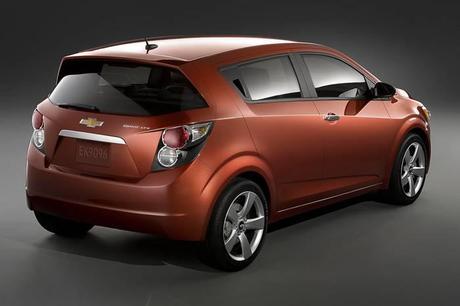 Several articles and events recently have reinforced the optimism I sense in our switch to lower pollution, lower consumption, and more sustainable lives. The hope springs forth in part because there is not just one group or sector or even one reason why society is shifting to more sustainable options. Rather, the change is spread out across individuals and groups, companies and organizations, and society at large. Government and the private sector are both taking steps in the right direction, even if the steps they take are not necessarily in lock step with one another. Perhaps most importantly, the tipping point is arriving where changes are being made for a variety of reasons, all of which are sensible with their respective rationales: to save money, to get votes, to feel good, to take responsibility, to compete in markets, to brandish an image, to change behavior, and to lead.
Several articles and events recently have reinforced the optimism I sense in our switch to lower pollution, lower consumption, and more sustainable lives. The hope springs forth in part because there is not just one group or sector or even one reason why society is shifting to more sustainable options. Rather, the change is spread out across individuals and groups, companies and organizations, and society at large. Government and the private sector are both taking steps in the right direction, even if the steps they take are not necessarily in lock step with one another. Perhaps most importantly, the tipping point is arriving where changes are being made for a variety of reasons, all of which are sensible with their respective rationales: to save money, to get votes, to feel good, to take responsibility, to compete in markets, to brandish an image, to change behavior, and to lead.
Two articles in particular stand out as evidence of this trend. One is about how something as simple as changing the size of waste baskets people have at work influences the amount of waste that gets generated. The other deals with a very complex issue: staying relevant in the brutally competitive automobile industry. I came across both articles on the New York Times, incidentally.
The waste basket article chronicles the reduction in garbage Dartmouth experienced when it replaced normal sized desk trash cans with 6 inch tall ones. One year after the change was made, “Dartmouth has sent 200 less tons of trash to the landfill, and recycling is up by one third,” according to the article. All the desks at the school get a “zero sort” box for all items that can be recycled (paper, glass, aluminum, plastic) and everything else that can’t be recycled has to go into the tiny trash tub. One key component of this plan is that the owner of the trash tub has to take it out to a disposal area each time it gets full. This ownership of the problem, along with the inconvenience of having to empty the tiny trash can a lot if you’re not mindful, is key. Trash is actually often a pretty personal matter and people don’t usually like being told what to do with their trash. This program, however, makes people get even more personal about their trash, making them think about what and how much is necessary to throw out and what isn’t.
A far from simple yet similarly powerful and effective change toward sustainability can be found at GM. The only subcompact car actually being built in American will soon roll of a suburban Detroit assembly line. The story of how GM pulled off such a feat is fascinating. Negotiations with the workers union resulted in much lower wages and personel costs but allowed jobs to stay in America. Those cost reductions had a lot to do with the fact that GM was able to make this possible. That said, in order to bring down production costs to the point where they would make the car’s final price competitive against cheaper vehicles made overseas, GM had to squeeze dollars from nearly every part of the car’s production cycle. This meant looking at where being more energy efficient could be a real benefit.
G.M. engineers and manufacturing specialists also had to adapt and reconfigure the Orion plant, which opened in 1983 and was used to build big cars like the Buick Riviera. G.M. spent heavily in converting the plant, investing $545 million in new equipment and retraining workers — and it shows, from the gleaming floors to the banks of fluorescent lighting that brighten the plant and save $430,000 a year in energy costs. The plant is also the company’s greenest, producing 80 percent less solid waste and using 20 percent less water, all at a savings. The production line’s footprint alone was reduced from a million square feet to 500,000 — the equivalent of losing the space of more than two Wal-Mart Super Stores. The energy bill was cut by powering some operations with methane gas from neighboring landfills. The Sonic will be G.M.’s littlest, and most fuel-efficient, conventionally powered vehicle.
The full NY Times article about GM is a good read but the above should give you a sense of how the environmental and economic can come together to produce competitive benefits. Examples of these kind of changes have proliferated in the 2 and a half years since we started this site, and the pace is increasing. It’s not just the eco-friendly or rich that see these kind of changes as beneficial. The movement is spreading among colleges, governments, businesses, and individual for a plethora of reasons. We’re on our way to a more sustainable world.
[Image]
